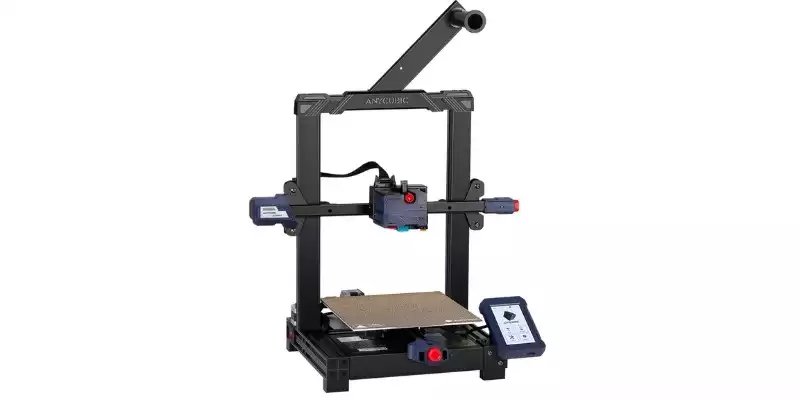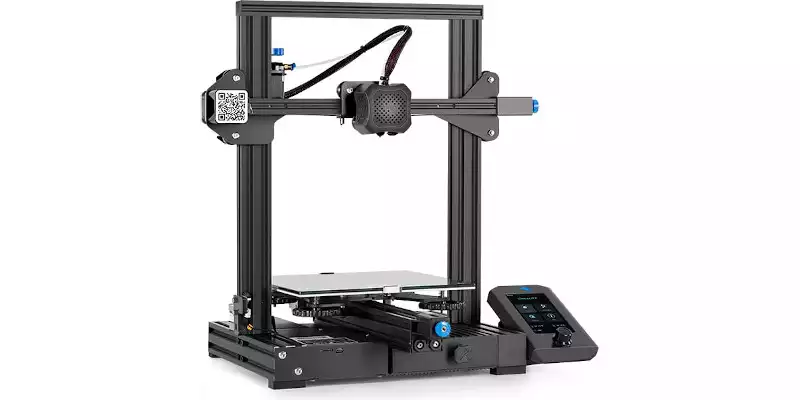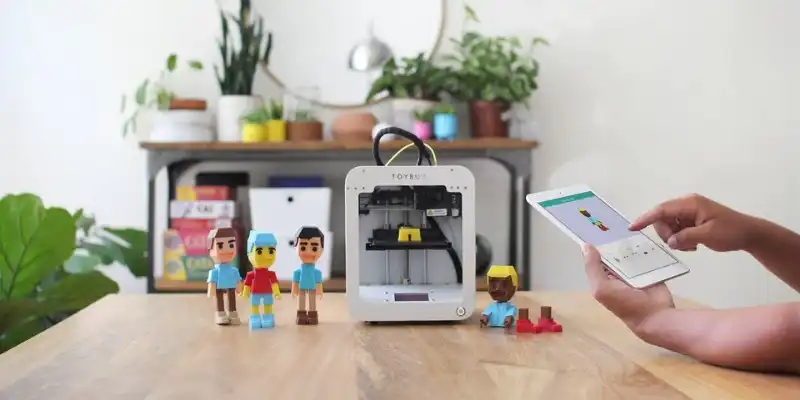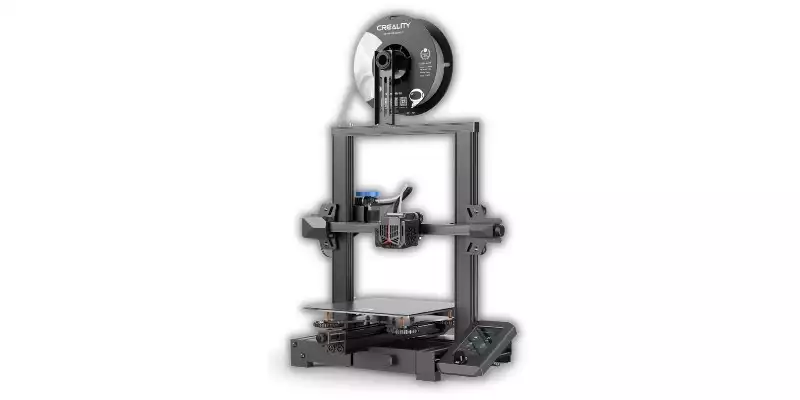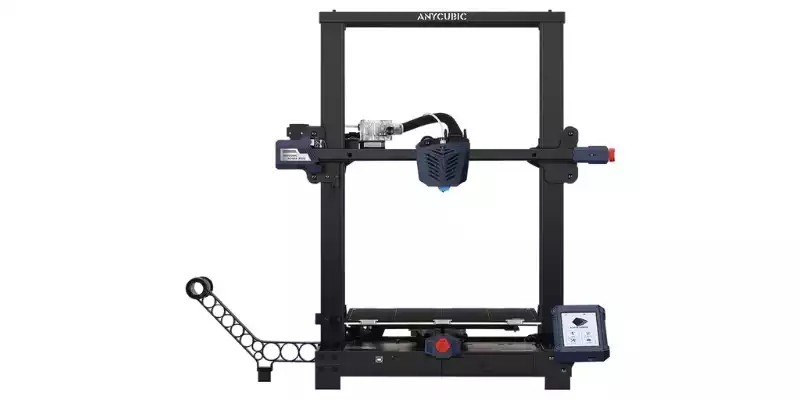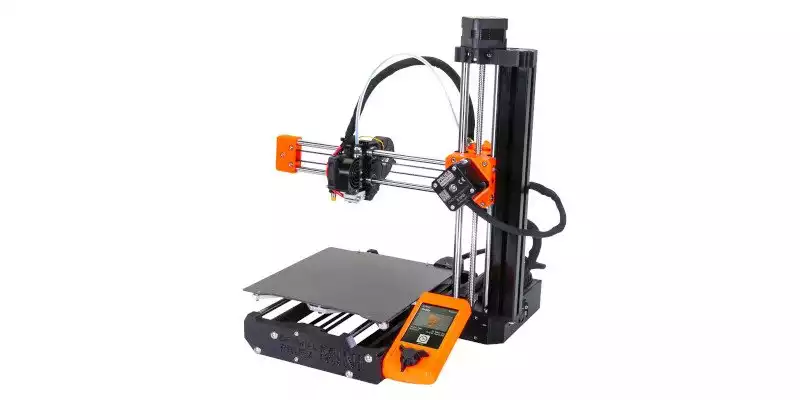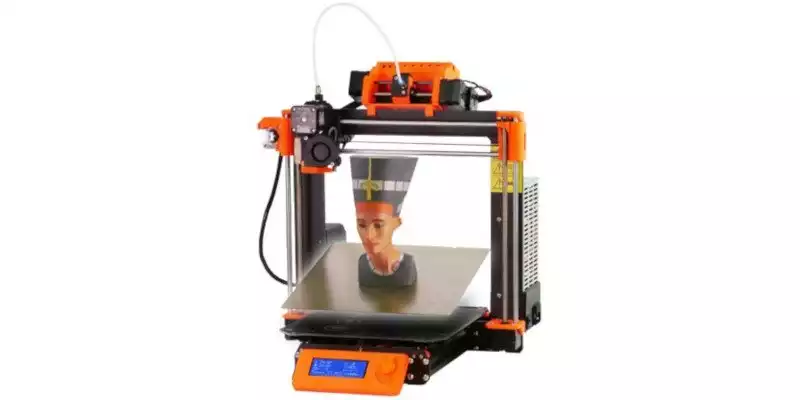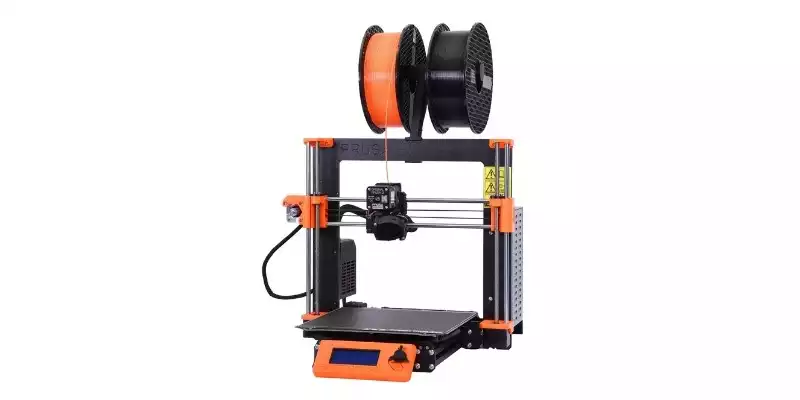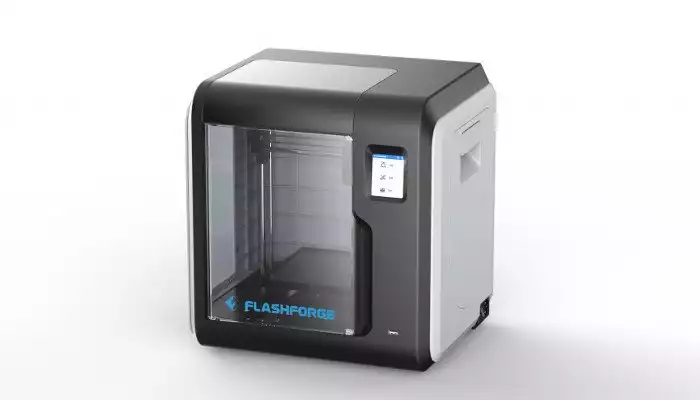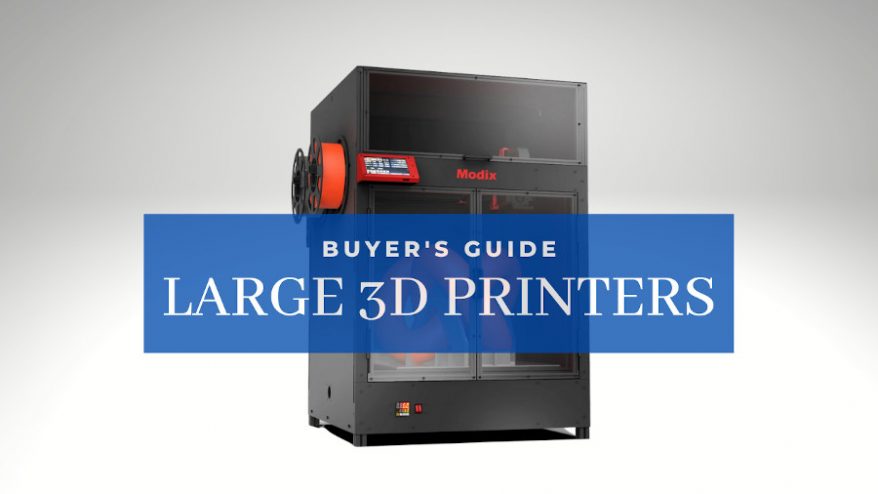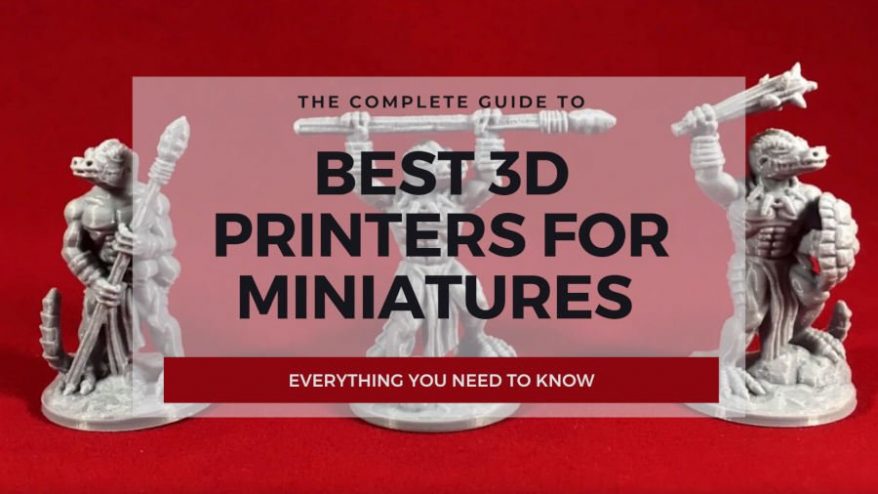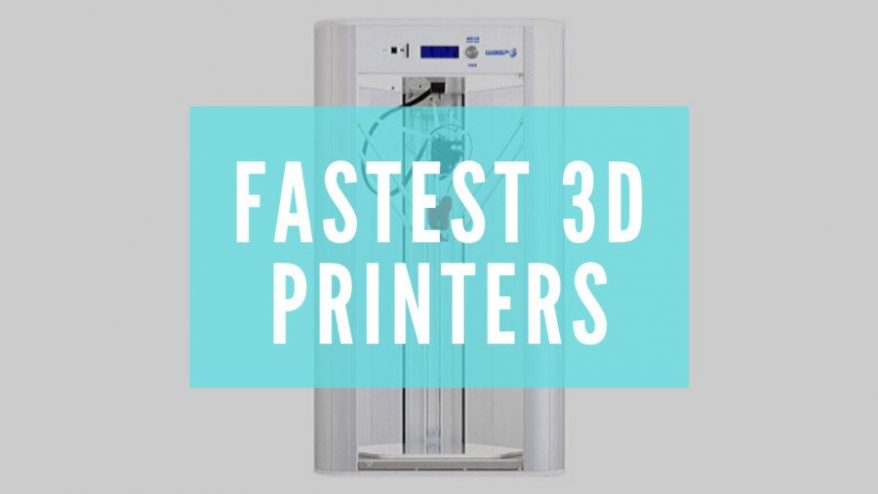3D printing Lego is a fun and creative way to craft unique sets and replace those elusive lost pieces. However, Lego bricks must be the exact right size with zero flaws to fit together right. In this guide, I’ll compare the best 3D printers for Lego, focusing on factors like reliability, enclosed printing space, and heated bed temperature.
|
|
|
|
|
4.5
|
5.0
|
4.8
|
|
$299
|
$279.99
|
$299-349
|
|
220 x 220 x 250mm
|
220 x 220 x 250mm
|
70 x 80 x 90mm
|
|
180mm/s
|
120mm/s
|
60mm/s
|
|
0.05mm
|
0.05-0.35mm
|
0.2mm
|
|
260℃
|
260℃
|
220℃
|
|
|
The Ender-3 V2 Neo is renowned for its affordability and high-quality prints, making it a top pick overall.
If you’re buying for kids, the Toybox 3D Printer is a super simple option that prioritizes safety when crafting smaller creations like Minifigures and Lego bricks.
And for more advanced users prioritizing precision, you can’t beat the Anycubic Kobra emerges as a commendable option, especially suited for more advanced users.
These are all crucial for maintaining the precision required for your Lego pieces to fit together properly!
Quick Overview
- Creality Ender 3 V2 Neo: Top cheap pick
- Toybox 3D Printer: Best for kids and beginners
- Anycubic Kobra: Amazing precision for $300
- Prusa Mini+: Top reliable pick, but small build volume
- Prusa i3 MK3S+: Premium choice with a huge build volume
- Flashforge Adventurer 3: A well-balanced budget pick
The Best 3D Printers For Lego – Reviews
1. Creality Ender-3 V2 Neo – Top Pick Overall
- Price: Check the latest price at Creality here / Amazon here
- Build Volume: 220 x 220 x 250mm
- Max Print Speed: 120mm/s
- Minimum Layer Height: 0.05~0.35mm
- Max Extruder Temperature: 260℃
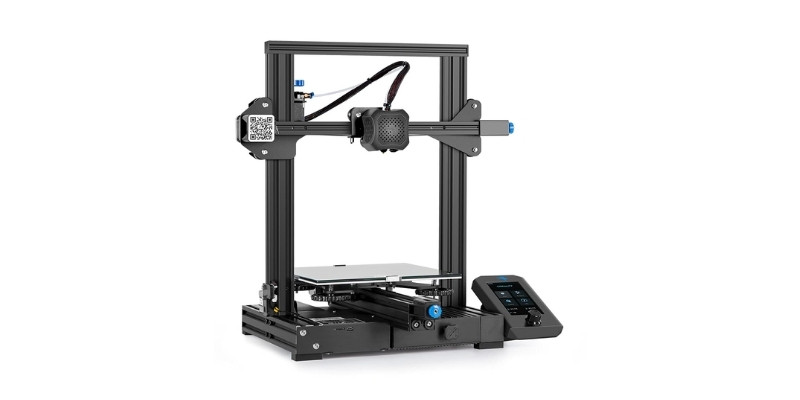
Pros
Affordable price tag.
Reliable and durable.
Can be upgraded easily and in many ways.
Cons
More advanced 3D printers are now available.
The Ender-3 V2 Neo is an easy-to-use 3D printer that offers unparalleled value for money when producing quality Lego prints.
Right out of the box, the quick 30-minute assembly impressed me. Leveling was a cinch thanks to the included CR-Touch auto-bed leveling – a huge help for beginners. The removable spring steel print surface also made popping completed prints off super easy.
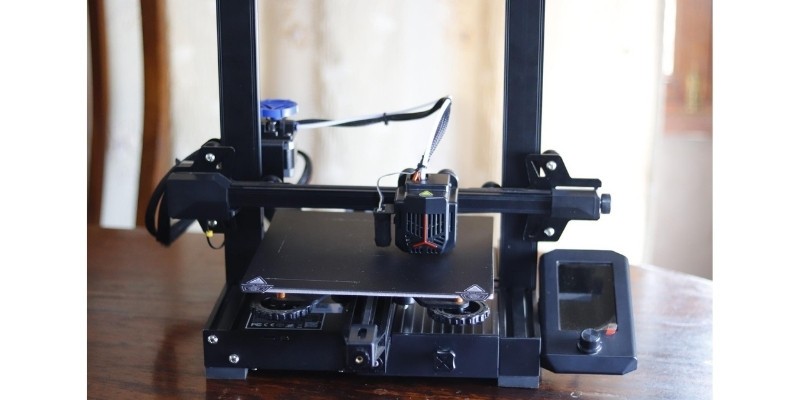
During my tests, the V2 Neo delivered outstanding print quality on tiny Lego-style models. The precise 0.05~0.35mm layer height also captured details like Lego studs more cleanly than similarly priced printers with 0.2 mm resolution.
Many affordable machines struggled with smaller ABS prints, resulting in defects or failed builds. But the V2 Neo’s enclosed design maintained ideal temps for smooth layer adhesion even on tiny parts.
At faster speeds, some imperfections emerged, but at standard settings prints were pristine.
For frustration-free printing of small Lego bricks and figures right out of the box, the Ender-3 V2 Neo delivered quality and reliability beyond other starters I’ve used.
The filament run-out detector is a handy feature, too. While I didn’t need to use it during my test, it’s a nice addition to help protect you from print failures over time.
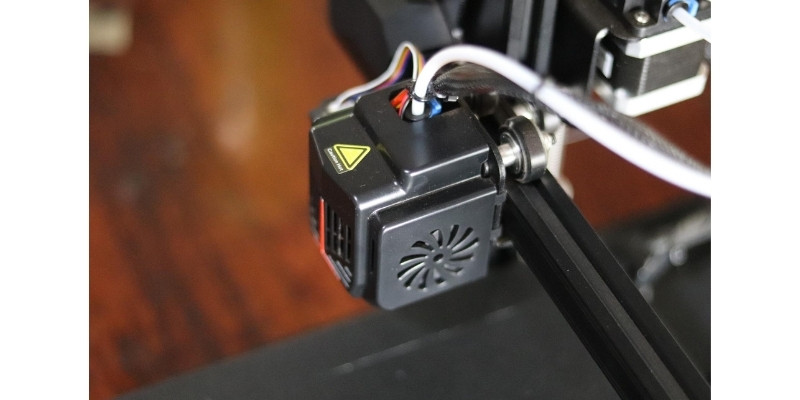
An easy-to-use enclosed 3D printer with auto-leveling and removable steel print surface.
With pristine 0.1 mm resolution, you won't find a more precise 3D printer for this price anywhere.
Easy setup, operation and print removal make this an ideal pick for beginners.
2. Toybox 3D Printer – Best for Kids
- Price: Check price at Toybox here
- Build Volume: 70 x 80 x 90mm
- Max Print Speed: 60mm/s
- Minimum Layer Height: 0.2mm
- Max Extruder Temperature: 220℃
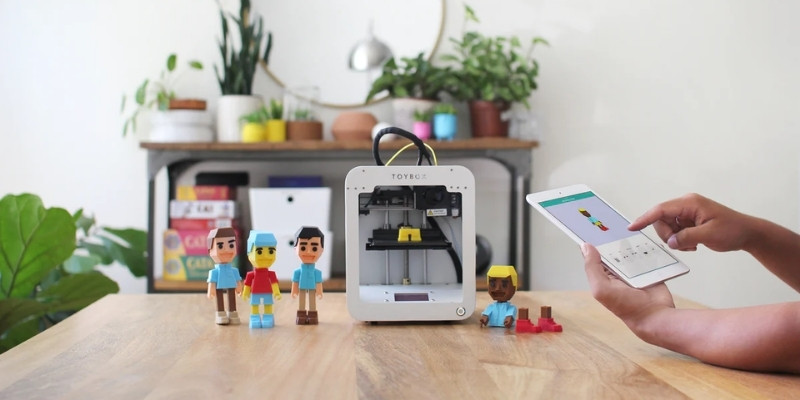
Pros
One of the easiest 3D printers to use.
Ideal for beginners and kids wanting to build lego.
Comes with access to extensive toy files to print for free.
Cons
Smaller print area than most 3D printers.
Can only print PLA filament.
The Toybox 3D printer is designed specifically for printing toys, and is targeted towards kids and absolute beginners.
First things first, it doesn’t have anywhere near as good specs as competitors on this list. But I still think it’s one of the best 3D printers for printing Lego pieces, and Lego toys, around. It impressed me greatly when I tested it for my review.
Why? Because it comes with apps for building your own block-shaped versions of you, so you can print Lego-like toys more easily than with any other printer.
There’s also a toy archive containing thousands of other files, such as mini tanks, F1 cars, and even officially licensed Batman Lego-style models you can download and print!
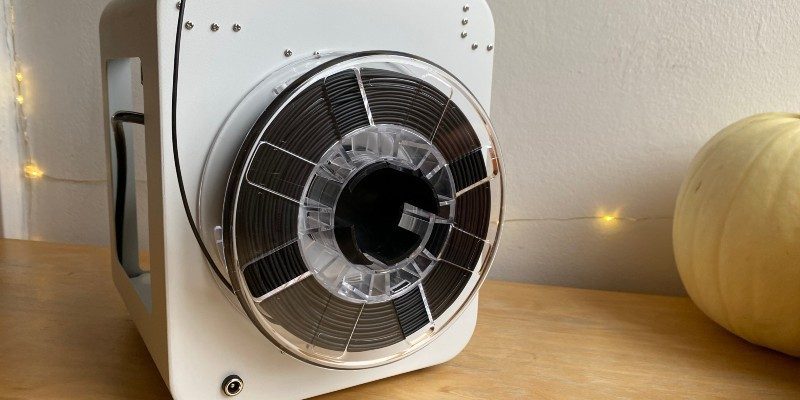
For all these reasons, it’s ideal for young kids to print Lego models and other toys.
However, because it is designed to be safe for kids, the hot end can only reach 220℃. As a result, you can only print PLA, and not ABS or any other tougher filaments.
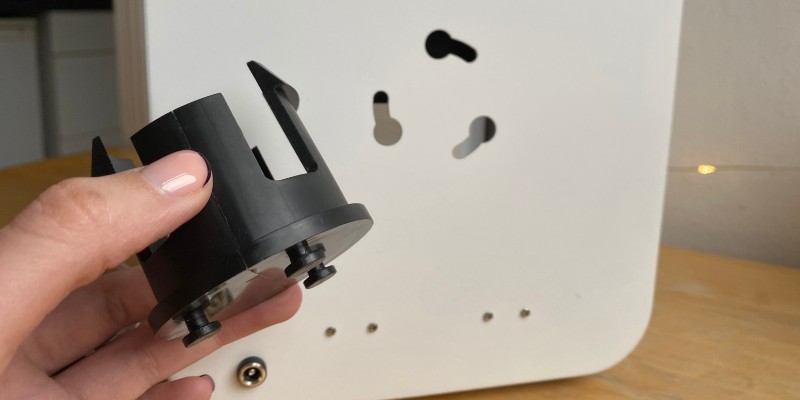
ABS is typically used to make traditional Lego blocks, so your PLA blocks won’t be exactly the same, but you’ll barely notice the difference to be honest.
It also has a very small build volume compared to other printers. So, it’s only suitable for making these Lego characters and accessories, rather than larger prints.
Overall, the Toybox is very easy to set up and use, and is the perfect option for getting your kids into 3D printing in a safe and simple way. With Lego-like files you can download from their repository, it’s ideal for 3D printing Lego, or even just generally 3D printing toy models.
Super easy to set up, comes with different filament colors to get started, and a huge range of 3D printable files (including licensed Batman models!) that your kids will LOVE.
- Very simple smartphone interface suitable for all ages.
- Fully enclosed design keeps hot parts away from fingers.
- Easy to switch between colors of PLA filament
- Can only print PLA, not higher-temp materials like ABS.
3. Anycubic Kobra / Kobra Plus – More Advanced for Adults/Teenagers
- Price: Check price at Anycubic here / Amazon here
- Build Volume: 220 x 220 x 250mm / 350 x 300 x 300mm
- Max Print Speed: 180mm/s / 180mm/s
- Minimum Layer Height: 0.05mm / 0.05mm
- Max Extruder Temperature: 260℃ / 260℃
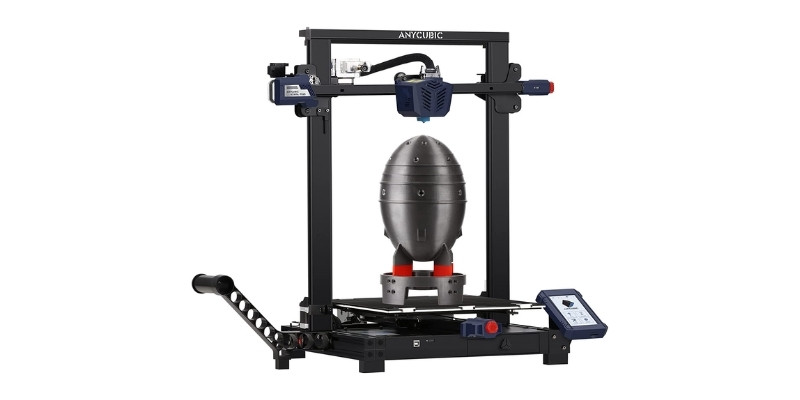
Pros
One of the cheapest 3D printers with auto-leveling.
Direct drive extruder is ideal for beginners.
Great performance for the price.
Cons
The build volume is a bit small.
If you’re not a beginner in 3D printing, or simply want to have a wider range of options when 3D printing your Lego sets, the Anycubic Kobra line is definitely worth a look, and performed great during our hands-on test.
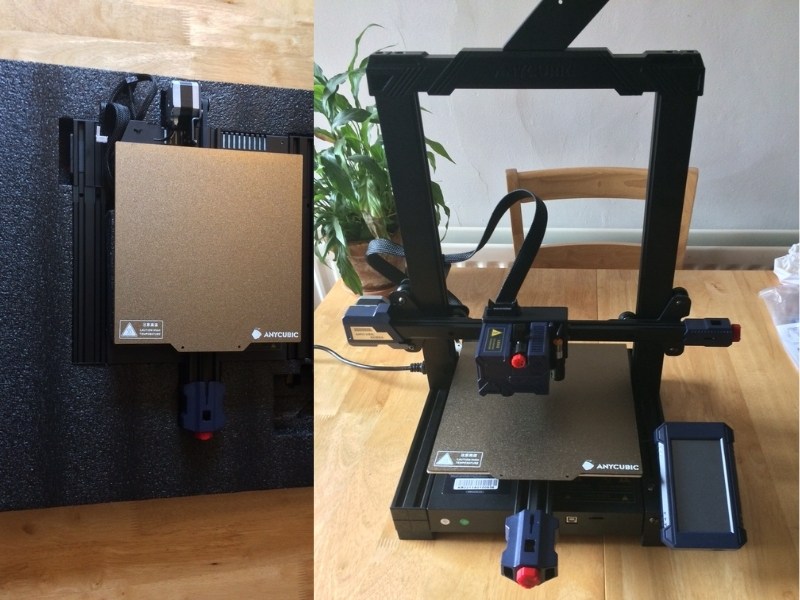
They’re both strong and reliable machines that are great for 3D printing larger projects as well as smaller ones like Lego pieces with ease. Their resilient bed plate and large range of compatible filaments is also great news for those of you who’ve been let down before by lesser machines. This means you can print Lego with a variety of materials and won’t be limited to only ABS.
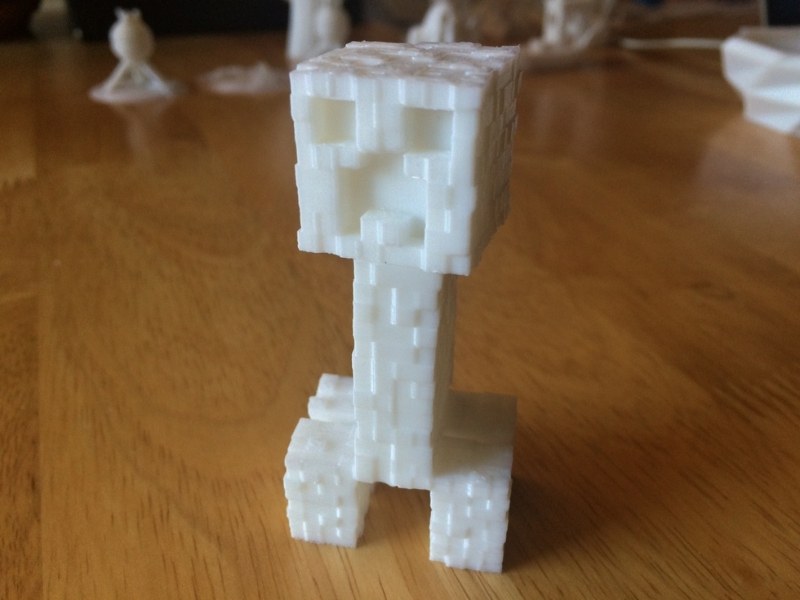
The main reason to opt for the Kobra Plus over the standard Kobra is its build size, which allows for larger prints as well as making more pieces at once if efficiency is a priority for you when 3D printing your Lego.
If you don’t need or want the extra build volume, then you’re better off saving your money and going for the original Kobra. Both are fast and accurate machines that won’t let you down in the accuracy department.
Full comparison: Anycubic Kobra vs Kobra Plus
This ultra budget-friendly printer assembles in a lightning-fast 15-60 mins.
The lightweight 7kg body and 220 x 220 x 250mm build volume make printing and portability a breeze.
Reliable auto-leveling and filament runout detection provide peace of mind.
Perfect for beginners seeking hassle-free printing, the Kobra delivers impressive performance with no fuss!
4. Prusa MINI+ – Premium Pick
- Price: Check latest price at Prusa here
- Build Volume: 180 x 180 x 180mm
- Max Print Speed: 200mm/s
- Minimum Layer Height: 0.05mm
- Max Extruder Temperature: 280℃
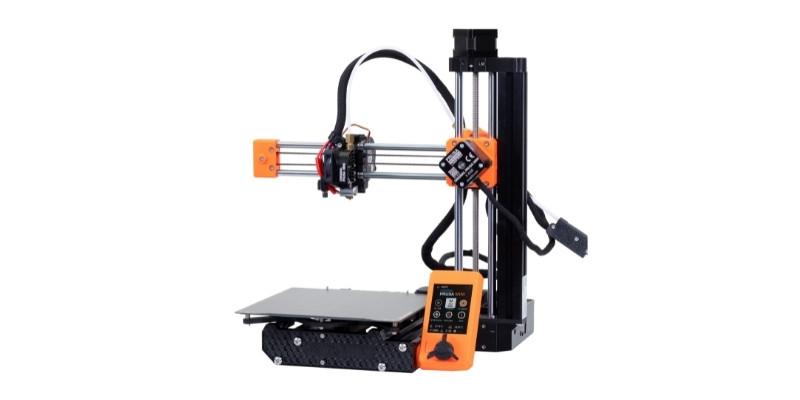
Pros
Reliable and durable, like all Prusa printers.
Fast print speeds.
Cons
The gantry system isn’t very sturdy.
Despite it being one of the most expensive entries to our list of the best 3D printers for Lego, the Prusa MINI+ is still considered a budget 3D printer due to its moderately large build size and its impressive print speed.
While great for 3D printing Lego amongst other FDM projects, it is mainly a printer for people already used to 3D printing. It’s not ideal as a teaching tool as it lacks many of the safety features that would make it suitable for kids. For example, it doesn’t have an enclosure and heats to a very high temperature.
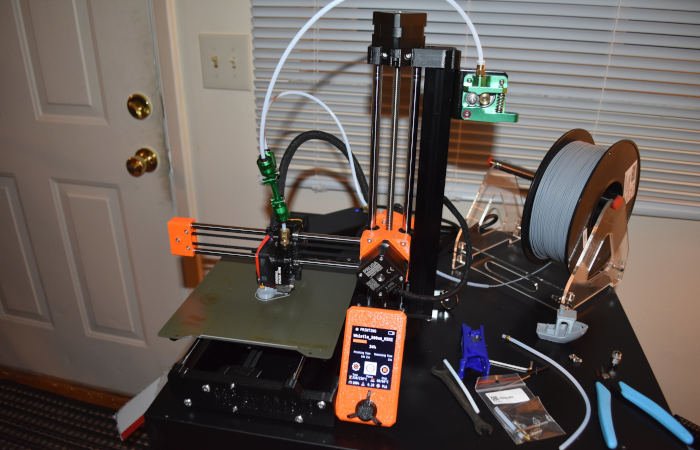
That’s not to say it’s a dangerous machine however, it’s simply to say that it’s not generally suitable for younger or inexperienced users if they’re not used to the dangers of using a 3D printer.
Though if you’re already in the know about 3D printing, then we recommend checking out the Prusa MINI+ as a sturdy and speedy model for 3D printing Lego pieces and so much more. It is also available either pre-assembled or as a kit, which does affect its price.
All the reliability of the Prusa MK3S+ and MK4, but in a cheaper and smaller package.
5. Prusa i3 MK3S+ – Huge Build Volume
- Price: Check latest price at Prusa here / Amazon here
- Build Volume: 250 x 210 x 210mm
- Max Print Speed: 200mm/s
- Minimum Layer Height: 0.05mm
- Max Extruder Temperature: 300℃
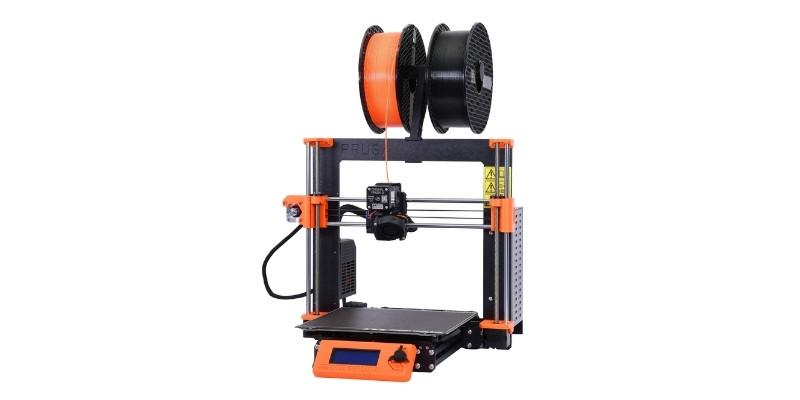
Pros
Reliable and durable.
Comes with auto-leveling and many other time-saving features.
Cons
Can take a long time to build unless you buy it pre-built.
While the i3 MK3S+ may seem overpriced compared to the MINI+ from the same manufacturer, the additional cost accounts for so much more than the massively increased build volume.
The i3 MK3S+ is about as sturdy as it gets as it’s made from very high-quality parts. This adds not only to the safety factor, but also makes it a more reliable printer for printing small pieces like Lego with good accuracy.

It also has a huge range of compatible filaments as well as an automatic filament sensor, streamlining the printing process and taking some of the work off your shoulders.
If you want a large and powerful 3D printer that can make anything from tiny Lego pieces to larger busts and statues, then the i3 MK3S+ is worth the larger price tag as either a kit or a pre-assembled machine.
Like the MINI+, however, it’s not generally suitable for younger users or those who doubt their experience in 3D printing.
Meet the gold standard in DIY printing - the Prusa i3 MK3S+!
Print like a pro with exotic filaments like PC and nylon thanks to the 300°C hotend.
Reliable, precise, and loaded with innovations like auto bed leveling, the Prusa i3 MK3S+ delivers exceptional performance right out of the box!
6. Flashforge Adventurer 3 – Beginner-Friendly Enclosed 3D Printer
- Price: Available on Flashforge Here / Available on Amazon Here
- Build Volume: 150 x 150 x 150mm
- Max Print Speed: 100mm/s
- Minimum Layer Height: 0.1mm
- Max Extruder Temperature: 265℃
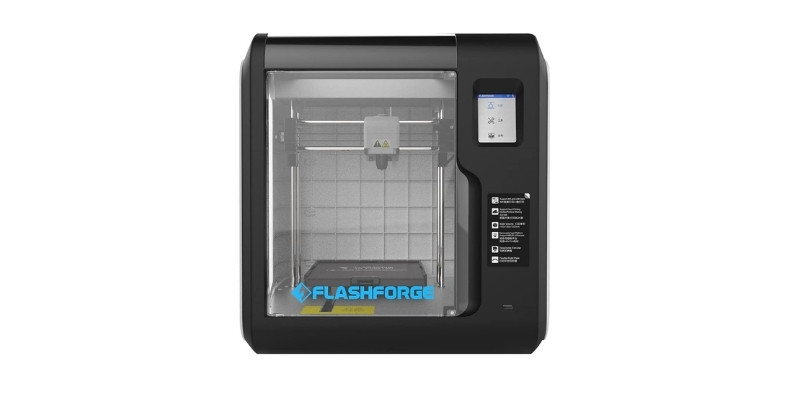
Pros
Enclosed for reduced warping.
Easy auto-calibration
Swappable nozzles for precise printing.
Cons
Small 150 x 150 x 150 mm build volume
For new makers seeking a beginner-friendly enclosed printer for smaller Lego prints, the pre-calibrated and easy-to-use Flashforge Adventurer 3 is a solid choice.
The 150 x 150 x 150 mm build volume limits large projects like Lego mats and build surfaces, but I had great outcomes printing mini figures and individual bricks for my collection.
The enclosed chamber really made a difference here, preventing the warping and adhesion issues that can plague ABS prints. My mini figures came out with clean details and minimal defects thanks to the stable heating.
While noise levels are already low at 45db, the enclosure dampens them further – I barely heard the printer running even in quiet environments. Perfect for an out-of-the-way classroom location.
However, while the Adventurer 3 is a commendable compromise across various factors, it doesn’t secure one of my top spots.
It isn’t as cost-effective as the Ender 3 V2 Neo, nor as user-friendly as the Toybox for kids, and it doesn’t match the accuracy and detail of the Anycubic Kobra.
Nonetheless, its combination of an enclosed environment, detachable nozzle, and other thoughtful features make it a frustration-free and affordable option worth considering for Lego projects.
This mini 3D printer features a handy 150 x 150 x 150mm build volume, perfect for printing detailed miniatures or splitting bigger projects into pieces.
The enclosed chamber enables easy ABS printing with minimal warping.
With user-friendly WiFi controls, fast print speeds up to 50mm/s, and a budget-friendly price, the Adventurer 3 is the ultimate portable printing powerhouse!
What To Consider When Choosing a 3D Printer for Lego Projects
Here are the main factors to consider to make sure you buy a 3D printer that can handle all your Lego projects without overspending on features you don’t need:
Build Volume
Build volume is a pivotal factor as it dictates the maximum size of the Lego projects you can produce.
If your focus is on individual bricks and Minifigures, the smaller build volumes of the Flashforge Adventurer 3 and Toybox 3D Printer are perfectly suitable.
For larger prints, like play mats and build surfaces, the Prusa i3 MK3S+ stands out with a substantial build volume of 250 x 210 x 210mm.
Print Quality and Detail
3D printers with higher resolution and lower minimum layer height will yield more detailed and refined Lego pieces.
The Anycubic Kobra line and both Prusa models (MINI+ and i3 MK3S+) excel in delivering detailed prints with a minimum layer height of 0.05mm.
In terms of budget options, the Ender-3 V2 Neo also impresses with a 0.05~0.35mm layer height (unparalleled precision for a sub-$200 device).
Balancing Price and Value for Money
For hobbyists on a budget, striking a balance between cost and quality is key.
The Ender-3 V2 Neo is a standout option, offering exceptional value for money and superior print quality at an affordable price.
The Anycubic Kobra series also presents a cost-effective solution, delivering great performance and auto-leveling at a competitive price point.
For younger users and beginners, the Toybox 3D Printer offers a blend of simplicity and affordability, albeit on a smaller scale with a max height of 3-inch prints.
User-Friendliness and Safety
For those looking for a child-friendly option, ease of use and safety are vital.
The Toybox 3D Printer is designed with simplicity and kids in mind. It uses a low maximum extruder temperature and an enclosed design to dramatically reduce the risk of accidental injury.
On the inverse, while the Prusa models are feature-rich and reliable, they are better suited to individuals with some 3D printing experience due to their higher operating temperatures and lack of an enclosed chamber.
Material Compatibility
Material compatibility expands the horizons of your 3D printing projects.
While ABS is the traditional material for Lego blocks, the ability to use various filaments is nice for other projects you might tackle in the future.
The Anycubic Kobra series and Prusa i3 MK3S+ support a diverse range of filaments, offering flexibility in material choice.
It is worth noting that the Toybox 3D Printer is restricted to PLA filament, providing a safer option for kids, but lacking some of the strength compared to traditional ABS.
Upgradeability
The Ender range is stacked with upgrade potential, making the Ender 3 V2 Neo a budget pick you can customize over time with high-end features.
On the other hand, closed systems like Toybox are designed to be impossible to tinker with.
How Does 3D Printing Lego Work?
Standard Lego sets are typically made from ABS, which also happens to be a very common 3D printer filament. Because of this, FDM printing lends itself well to 3D printing Lego bricks.
Ideally, your printer will have a heated bed that can reach over 100 degrees with good adhesion and an enclosed printing space. While these aren’t necessary to print Lego pieces, they are ideal inclusions to make sure you get the best results every time.
While you can design your own Lego bricks from scratch for 3D printing, there are plenty of readily available STL files online so you can start 3D printing your own Lego bricks, minifigures, and even entire sets.
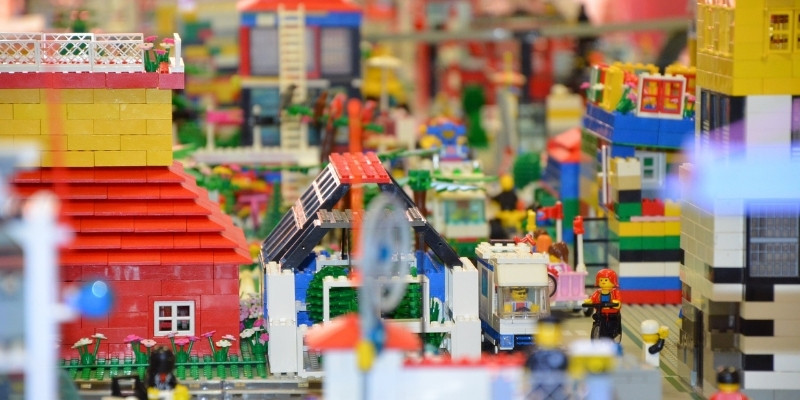
ABS is the standard for printing things like Lego bricks, but they can be printed with other materials like PLA and PETG.
Aside from the increased emphasis on accuracy, 3D printing Lego pieces isn’t difficult, but that doesn’t mean just any 3D printer will give you good, usable results. So now that you know that you can 3D print Lego with a 3D printer, it’s time to learn which 3D printers are the best ones for the job.
Not all of the printers we’ll talk about here are equal. Most can handle ABS, but some can’t, and the range of Lego you can make with other materials goes down in both variety and quality.
Less capable materials like PLA, open printing spaces which make warping more likely, or lower available temperatures for both extruders and heat beds are all factors that will make printing Lego more arduous and trial-and-error than is ideal.
Is it Cheaper to 3D Print Lego?
I don’t know about you, but I’m old enough to remember when you could buy decent Lego sets with a standard allowance (and let me tell you, my allowance was not that high!)
These days, however, it seems Lego is more of a luxury toy than a stocking stuffer. There’s still a massive box of Lego pieces in my mom’s attic that I bought set by set with chump change that these days would probably amount to upwards of $500!
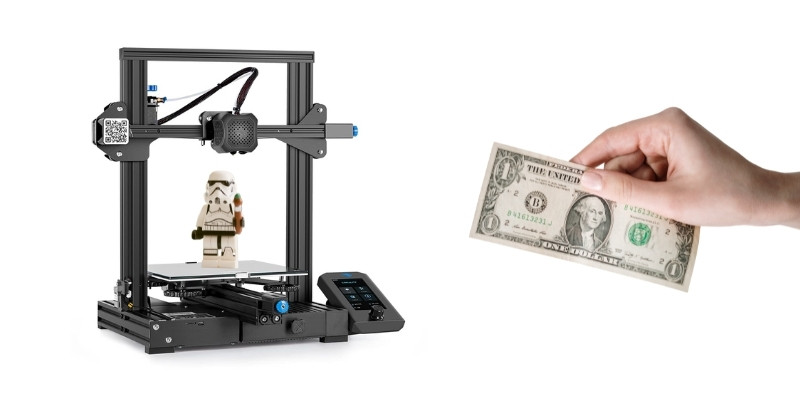
3D printer filaments are a lot cheaper, and make of pieces depending on the scope of your designs. Overall, 3D printing Lego is far cheaper than buying standard sets. While you likely won’t get the same quality as official purchases, 3D printing is a surefire way to get yourself some good Lego sets without having to rearrange your budget.
As of writing, a 1kg box of assorted Lego pieces from the official store is around $30. These don’t include minifigures, set instructions, or licensed characters.
Taking into account that a 1kg spool of ABS costs around $21 – $25 and can be used to make exact bricks you want or need as well as 3D printed Lego minifigures and set pieces of whatever you like, you can see that 3D printing Lego does work out a lot cheaper, especially in the long run.
Is it Legal to 3D Print Lego Pieces?
Something that’s likely to have been on your mind throughout this article is the legality of 3D printing your own Lego pieces and sets. The simple answer is yes, it is perfectly legal, but only if you make sure to avoid crossing certain lines.
Lego is a registered trademark, so any breaches of copyright will be actionable. If you plan on sharing your 3D printed Lego creations online, avoid using copyrighted terms and characters. Tempting as it may be to charge for your shared designs, doing so will violate copyright law and may land you in hot water.
Aside from that, you’re completely free to download and print as many Lego (and Lego-inspired) pieces as you like!
Why not check out our picks for the best 3D printed Lego designs to get your creative juices flowing?
3D Printing Lego – Hints and Tips
Here are some extra helpful hints to make sure not only that your 3D printed Lego sets come out right, but you also have fun making them.
Get Your Youngsters Involved
Lego advertises its products as suitable for ages 4-99, and that’s no lie. Lego sets are fun and creative projects for children and adults alike. I’m in my 30s and I can tell you I still enjoy the occasional build.
This all-ages appeal makes 3D printing Lego an excellent way to introduce any youngsters in your life to 3D printing. The process of making your own Lego as well as the end results should keep little ones entertained and invested while you show them how it all works, and makes for a great first step.
Be advised, however, that 3D printing isn’t without its dangers. So be sure to keep an eye on your little learners and teach them safety around 3D printers above all else. This includes which parts get hot, what not to touch, and why they should keep their distance while your 3D printer is doing its job.
Ensure Accuracy
As we’ve touched on before here, Lego bricks need to be exactly right to fit together and stay connected. While a millimeter or two off won’t make a difference to most projects, 3D printed Lego needs to match exactly to work like the real thing.
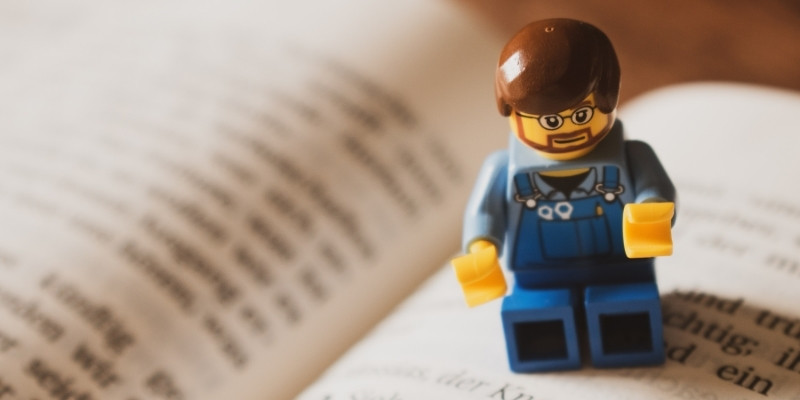
Ensuring accuracy in the original design and maintaining it while you make tweaks is imperative to ensuring you get working 3D printed Lego bricks. There’s nothing worse than a wobbly rocket or lopsided house, after all, and it can really dampen what should have been a fun build.
Keeping notes and tabs on specific sizes of interlocking pieces is a good way to do this, and is especially important if you’re 3D printing a Lego set made up of different files from different designers, who may use non-standard measurements.
What’s Changed?
We wrote the original version of this article in 2021. It has since been updated to feature our latest recommendations.
September 2023 updates:
- We updated this list to include more information about how the Toybox can be used to print (PLA) Lego pieces, as well as general tweaks to our recommendations.
Jan 2024 updates:
- Updated pricing information for 2024.
Related Posts:
- The Best Cheap 3D Printers in 2022 (Every Type & Use)
- 7 Fastest 3D Printers 2022 In Every Price Range
- 30+ Easy and Fun Things to 3D Print at Home
- Best 3D printable Lego STL files

